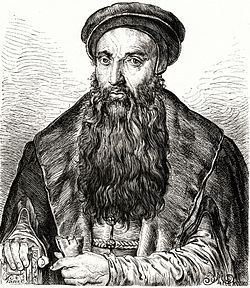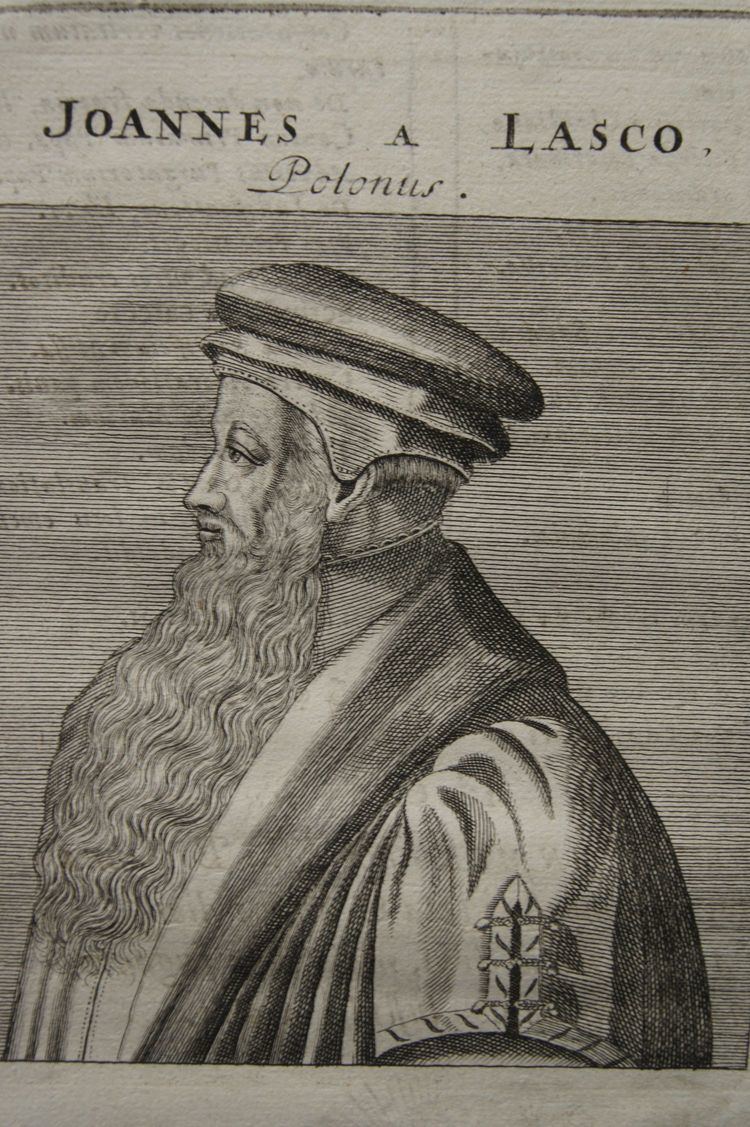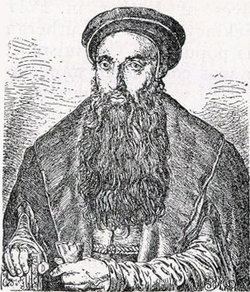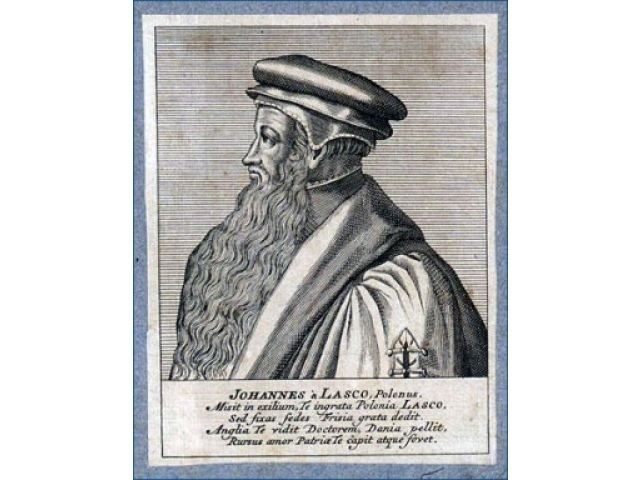Name Jan Laski | ||
 | ||
Jan aski starszy
Jan Łaski or Johannes Alasco (1499 – 8 January 1560) was a Polish Reformed reformer. Owing to his influential work in England (c. 1543–1555) during the English Reformation, he is known to the English-speaking world by the Anglicised forms John Laski and John a Lasco .
Contents

Life

Jan Łaski was born in Łask, the son of Jaroslaw Łaski, the voivode of Sieradz Voivodship, and Susanna Bąk, the daughter of Zbigniew Bąk of Bąkowa Góra. His uncle, also Jan Łaski, was by turns royal secretary, Archbishop of Gniezno, Primate of Poland and Grand Chancellor of the Crown; he was also the uncle of King Sigismund I the Old. Both Jan Łaskis' coat-of-arms was Korab.

After his family's fall from political power and prestige, Łaski, a learned priest, went in 1523 to Basel, where he became a close friend of Erasmus and Zwingli. In 1542, he became pastor of a Protestant church at Emden, East Frisia. Shortly after, he went to England, where in 1550 he was superintendent of the Strangers' Church of London and had some influence on ecclesiastical affairs in the reign of Edward VI.

In 1551, he excommunicated, and had burned at the stake for Arianism, a member of his London congregation, George van Parris.
On the accession of Roman Catholic Queen Mary in July 1553, he fled to Copenhagen with a shipload of refugees from the Strangers' Church. However they were denied refuge there because they would not accept the Augsburg Confession of Faith. They were resettled in Brandenburg. Łaski also helped Catherine Willoughby and her husband after they too had left England. His support enabled them to obtain an appointment from Sigismund II as administrators of Lithuania. Łaski was a correspondent of John Hooper, whom Łaski supported in the vestments controversy.
In 1556, he was recalled to Poland, where he became secretary to King Sigismund II and was a leader in the Calvinist Reformation.
His contributions to the Reformed churches were the establishment of church government in theory and practice, a denial of any distinction between ministers and elders except in terms of who could teach and administer the sacraments, and an understanding of the eucharist that was more Zwinglian than Calvinist. Łaski tried to reorient the debate by focusing on the entire ceremony, participation in which "seals" Christians in communion with Christ.
He died in Pinczów, Poland.
He is one of the figures on the Prussian Homage painting by Jan Matejko.
